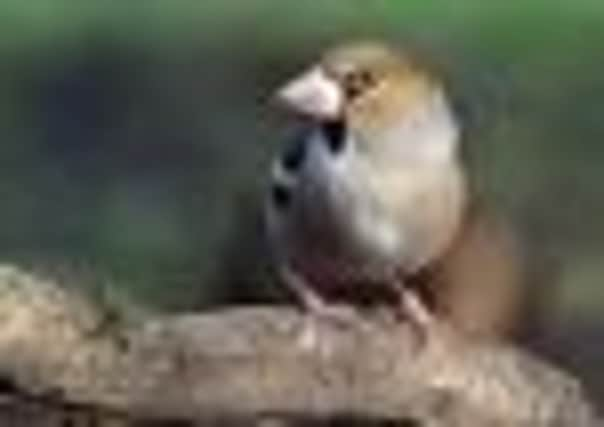Birdwatch: Elusive rarity draws watchers to Bingley


A male hawfinch has been seen sitting and preening in trees around the St Ives mansion, near Bingley, although it is absent for lengthy periods.
It is now much more difficult to find a hawfinch in Yorkshire than it once was as, along with the rest of the UK, traditional sites have been deserted as numbers have declined.
Advertisement
Hide AdAdvertisement
Hide AdTwenty years ago, a visit to the Fountains Abbey, Studley Royal or Duncombe Park estates, in North Yorkshire, or Woolley Woods, Roche Abbey or Bretton Country Park, in the south of the county, offered a fair chance of seeing at least one hawfinch, often flocks of 20 or more.
Now the closest reliable site for them involves a visit outside Yorkshire to the Clumber Park estate, in north Nottinghamshire, where hawfinches continue to be seen each winter in the trees around the chapel.
Hawfinch numbers increased in both the 19th and 20 centuries, reaching a peak between 1983 and 1990, but then declined by between 37 and 45 per cent in the following decade, and this decline has continued.
Predation of hawfinch eggs and young by grey squirrels is often cited as a reason for the decline, but a survey covering all woodland birds, carried out by the BTO and Natural England, found no conclusive evidence either way.
Advertisement
Hide AdAdvertisement
Hide AdIt would be a great shame if this decline continues until hawfinches finally disappear as a breeding bird from this country.
Hawfinches, the largest European finch, are a most attractive bird, the plumage a mix of soft pinks, buffs, dark and light brown and blue blacks.
But the most striking feature is the huge bill and muscular neck giving the hawfinch a top-heavy appearance.
The bill is a formidable tool for the hawfinch, the only bird capable of cracking open a cherry stone to eat the kernel.
Advertisement
Hide AdAdvertisement
Hide AdIt does so by holding the stone between four projecting knobs, two in the upper mouth and two below, and then using the powerful neck muscles to exert enough pressure to crack open the stone and extract the kernel with its tongue.
They also take hornbeam and beech nuts and the hard seeds inside yew berries are a particular favourite.
Still in the Bingley area, three snow buntings have been feeding around the edge of the Glovershaw Lane car park, on Baildon Moor, while a flock of waxwings has been seen in the village of Eldwick, one of a number of flocks still roaming the region, including 50 at the Fairburn Ings reserve, near Castleford.
Other sightings there include two little egrets and three short-eared owls.
Advertisement
Hide AdAdvertisement
Hide AdA rough-legged buzzard was seen for two days in fields between Darfield and Goldthorpe, in South Yorkshire, while another remains near Hatfield Moors.
Eight species of raptor have been seen at the Blacktoft Sands reserve, including up to 11 marsh harriers accompanied by a ring-tail hen harrier, an adult male hen harrier, male merlin, and three red kites.
A drake ring-necked duck and green-winged teal remain on Teesside, while a drake green-winged teal was seen at Horbury, West Yorkshire.